A Long Career Served Around the World- That Was the Albatross
The Grumman HU-16 Albatross served for 46 years. The Albatross was powered by two Wright R-1820-76 Cyclone radial piston engines in military service. The HU-16 was used by the United States Air Force (USAF), Navy (USN), and Coast Guard (USCG) for search and rescue (SAR), anti-submarine warfare (ASW), and other specialized duties.
When first introduced in 1949, the Air Force designation was SA-16, the Navy was JR2F-1, and the Coast Guard called it the UF-1. When the sweeping changes to aircraft designations occurred in September 1962, the designation of the 464 Albatross airframes built by Grumman changed to HU-16.
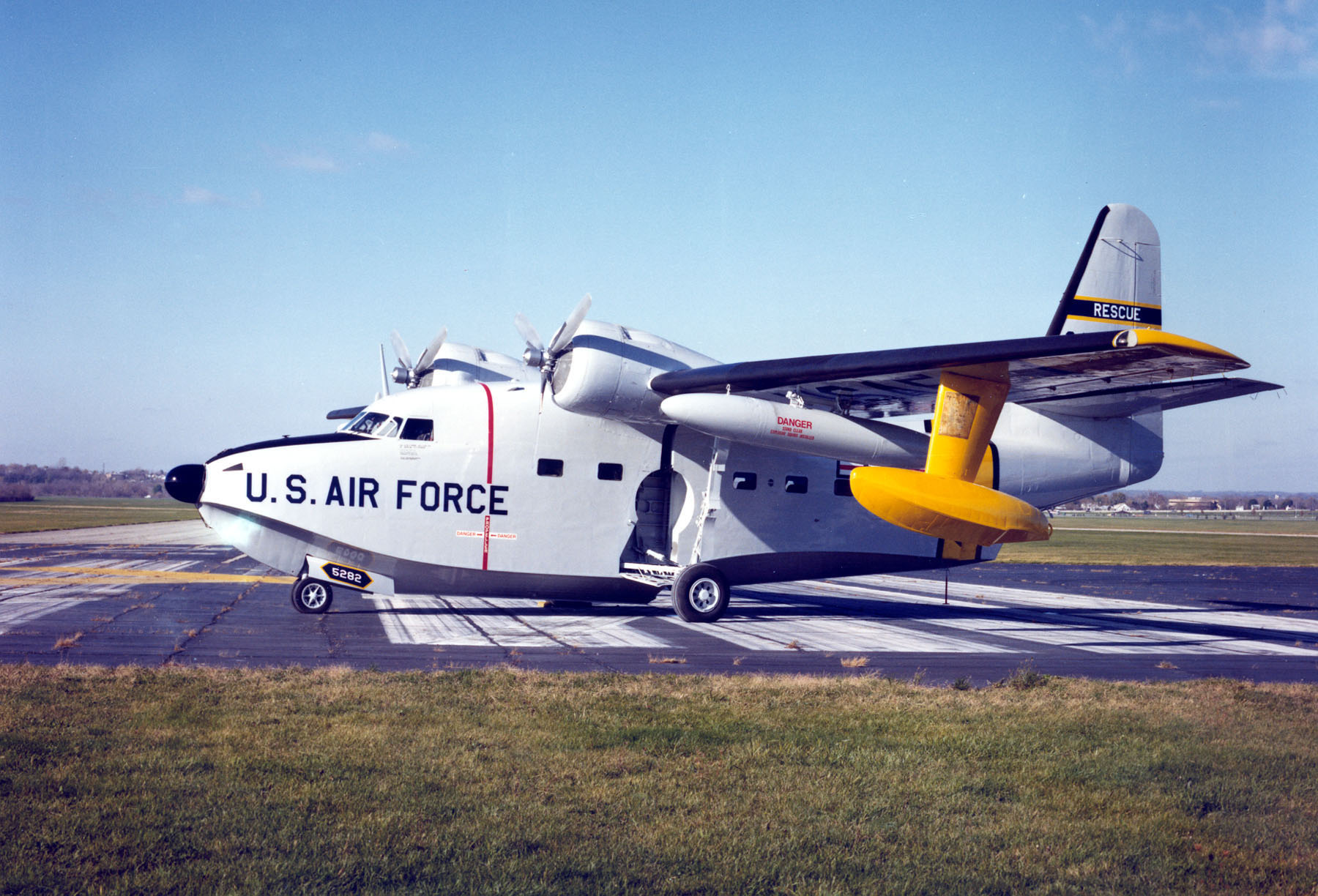
Descended From a Long Line of Grumman Designs
Grumman’s designator for the Albatross was G-64. It was a development of the G-73 Mallard design, a civil amphibious aircraft developed during a similar timeframe. Another influence was the Grumman G-21 Goose, a successful precursor to the Mallard. The Albatross was capable of open-ocean landings (optimally in seas no higher than 10 feet) due to its deep-V hull cross-section and long keel length, although higher seas could be downright punishing on the aircraft and crew. HU-16s could utilize jet-assisted takeoff (JATO) bottles to shorten takeoff runs in rougher seas.
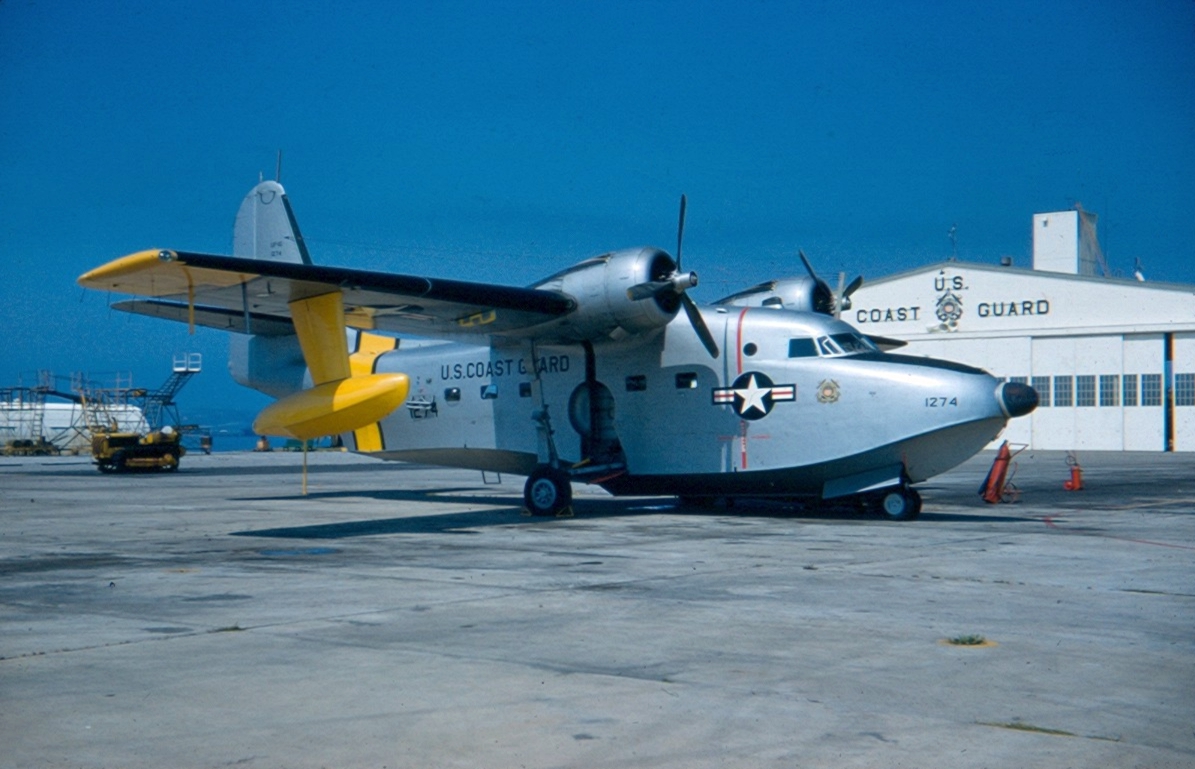
One Tough Bird
The Albatross built its reputation for toughness during its service in Korea as a SAR aircraft, gaining the nicknames Slobbering Albert, Duckbutt, Clipper Duck, and Goat in addition to the generic Dumbo air-sea rescue call sign. Air Force SAR crews went where others feared to tread in order to bring a total of nearly 1,000 United Nations (UN) personnel out of enemy-held territory.
The same was true during the Vietnam War, although the HU-16s were the longer-winged HU-16B model. USAF, USMC, and USN pilots and aviators knew that if they could make it to “feet wet” (the Tonkin Gulf) after taking damage to their aircraft, a HU-16B with the USAF Aerospace Rescue and Recovery Service (ARRS) would likely be coming for them.
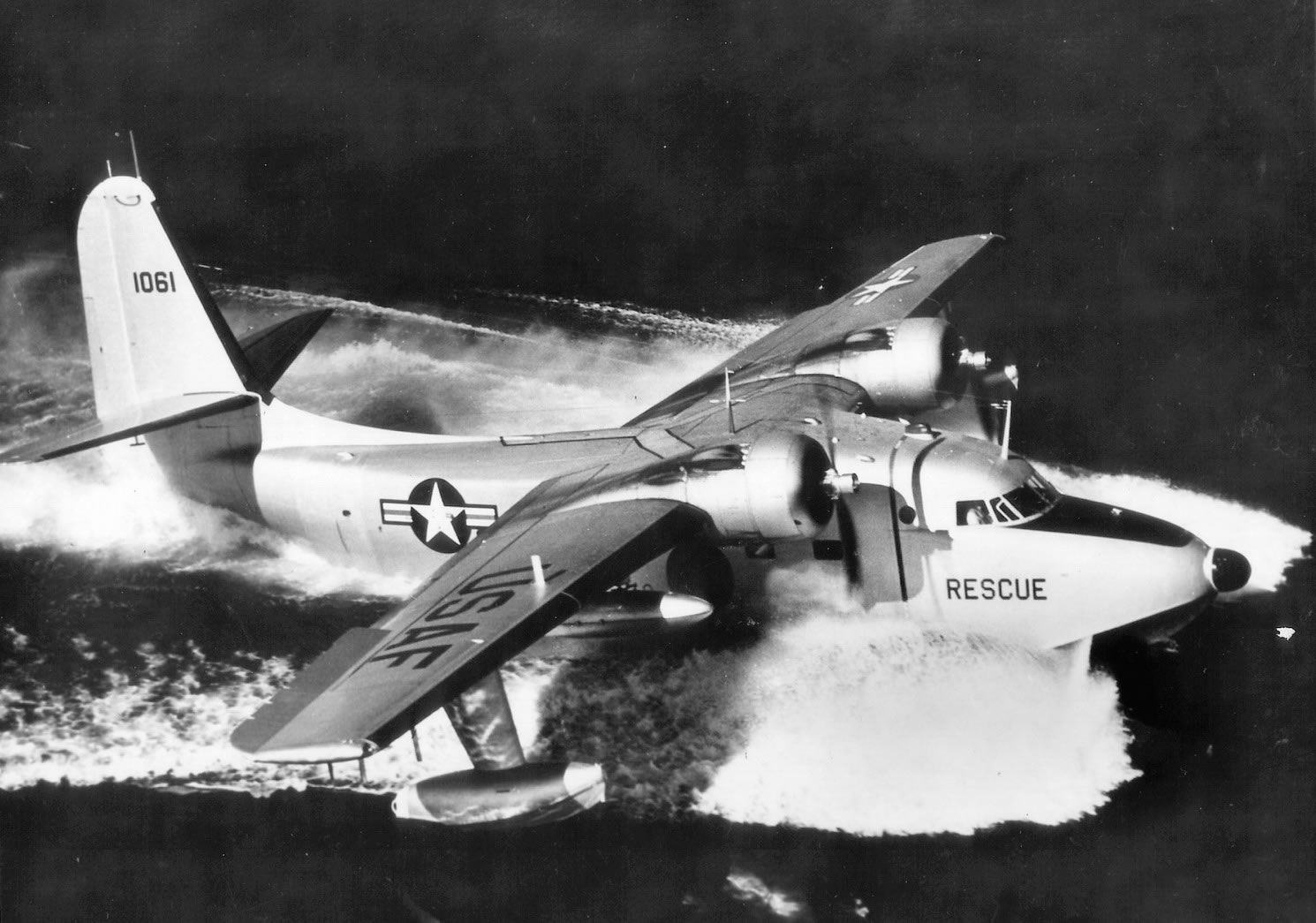
Island Hopping in Navy HU-16s
The Navy also used the HU-16 for SAR, but in smaller numbers over a much wider area. The Navy often operated their HU-16s mainly from US and overseas coastal naval air stations (NASs). During the Vietnam War, the Navy flew most of their rescue and support missions from NAS Agana in Guam.
During the early 1970s, the Navy’s “Goodwill” flights from NAS Agana and other remote air stations to the atolls and archipelagos in the Trust Territory of the Pacific Islands were more common. Navy HU-16s often trained in open-water landings and takeoffs using JATO from the waters near their air stations in the States.
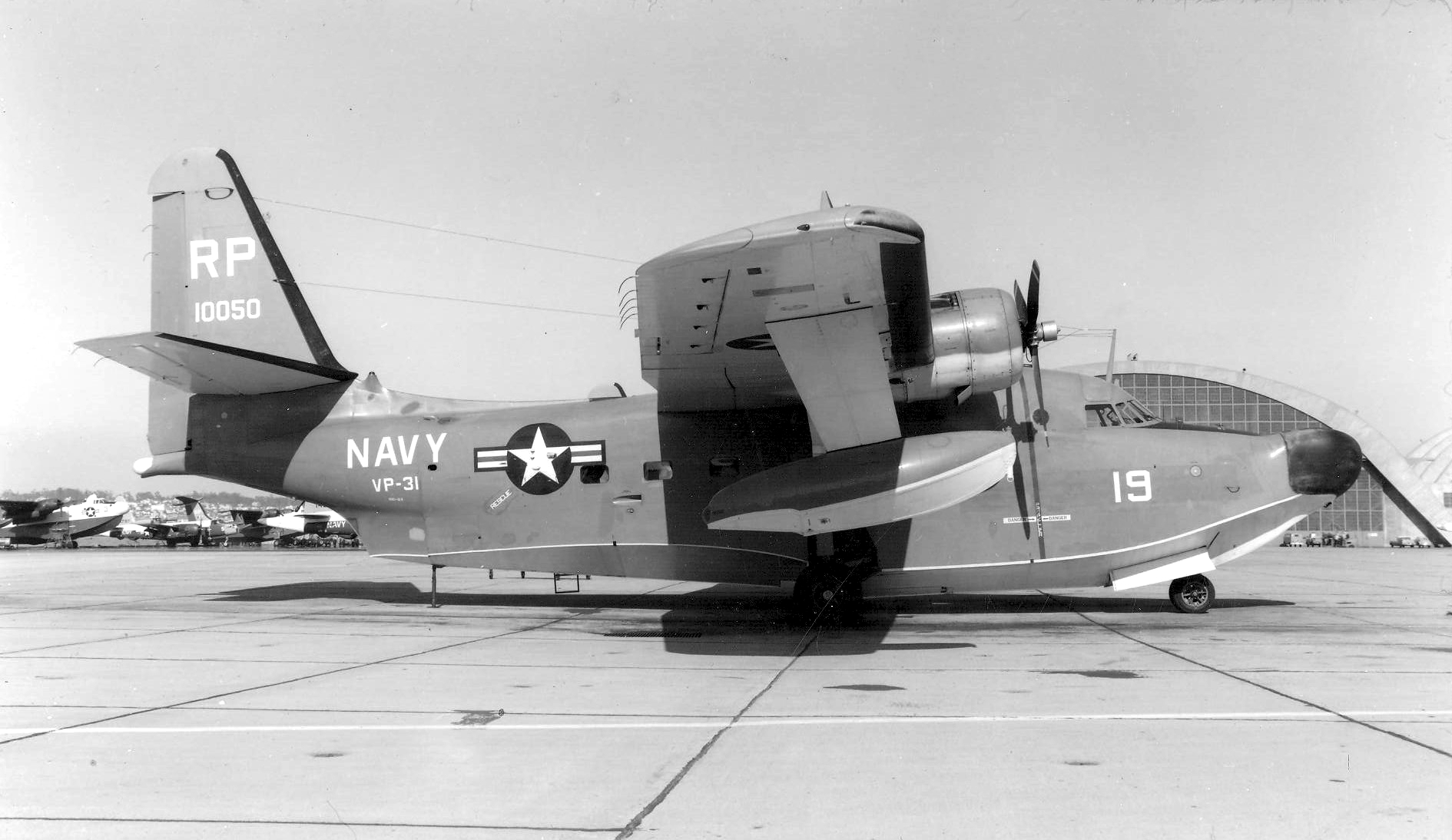
Sub Hunting With a Twist
The Navy’s ASW Albatross, designated SHU-16B, was introduced in 1961. Crewed by six and with a range of 3,200 miles, this version of the Albatross was equipped with a revised radar and radome housing in the nose, a retractable magnetic anomaly detector (MAD) boom in the tail, electronic counter-measures (ECM) lumps and bumps, and a steerable searchlight.
Ordnance payload was light, but usually consisted of depth charges. Rockets could be carried on underwing racks, but often those racks were used for drop tanks to increase range. US Navy service of the SHU-16B was exceedingly short, but Greece, Norway, and Spain also operated the SHU-16B.

Black Birds
One of the specialized roles the Albatross undertook was black operations. HU-16s, painted all black with subdued markings, were flown by shadowy USAF Air National Guard Air Commando groups between 1956 and 1971- some with reported ties to the Central Intelligence Agency (CIA). Where they went and what they did is still classified, but at least some of these missions were covert infiltration and extraction. Or maybe they weren’t.
But we do know that HU-16s also equipped Air Force Reserve (AFRES) Air Rescue Units during the 1960s and 1970s until the Air Force retired their last HU-16 in 1973—but only after the airplane set a new altitude record for piston-powered seaplanes. Nice finish!
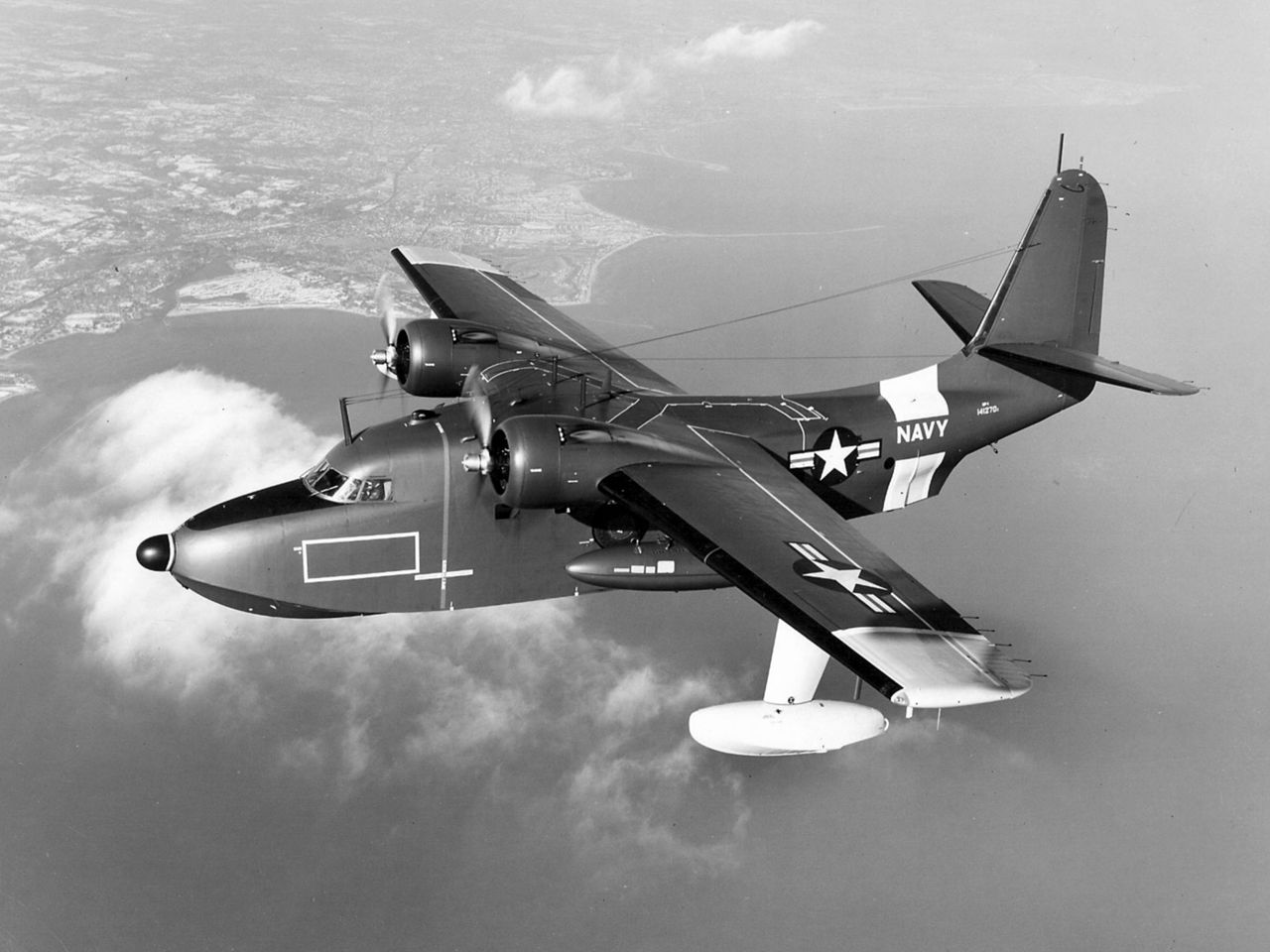

I have a lot of hours on the SA-16. Also was crew member on KC-97’s, C-119’s, C-54’s and C118’s. They were “luxury” airplanes. The SA-16 was a flying tank, capable of absorbing enormous punishment and still flyable. They were not as classy or pretty as the above mentioned but boy, they were fun.